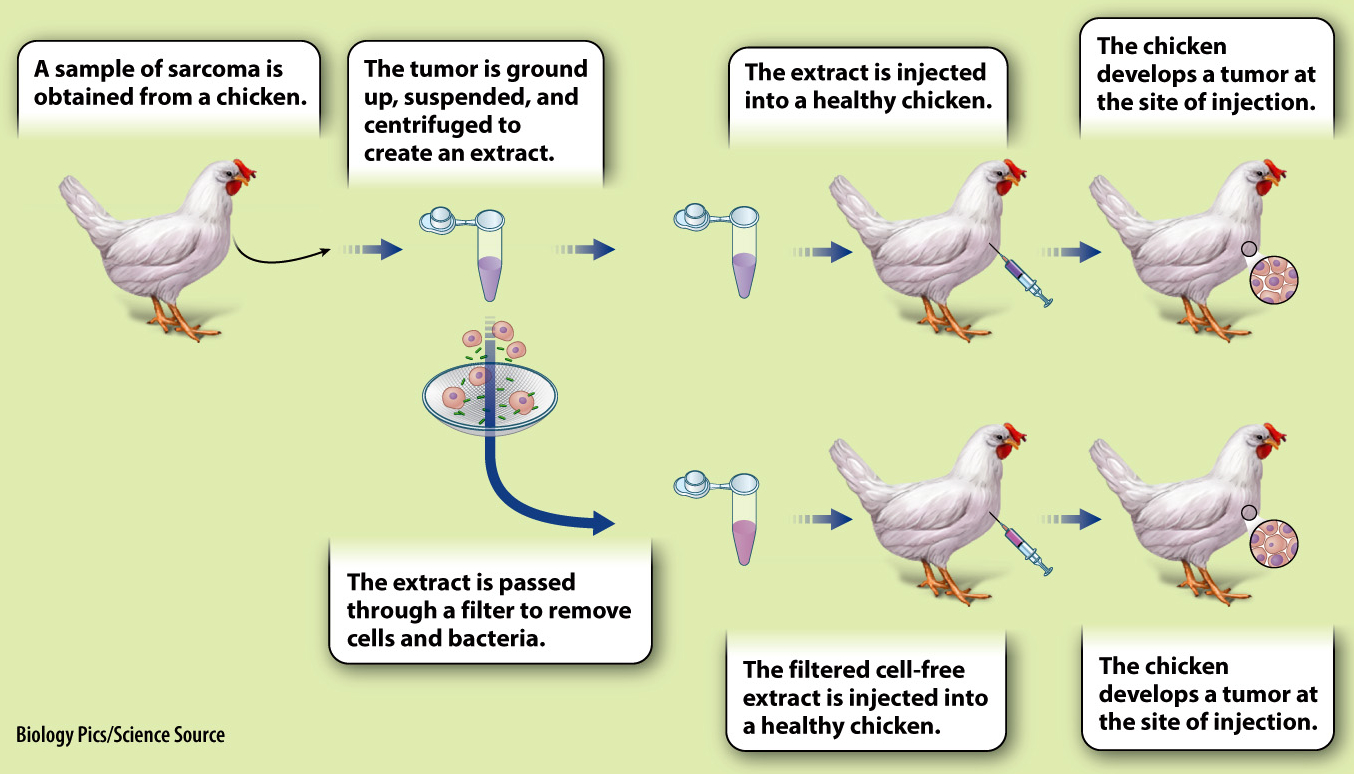Oncogenes promote cancer.
Our understanding of cancer is based partly on early observations of cancers in animals. In the first decade of the twentieth century, Peyton Rous studied cancers called sarcomas in chickens (Fig. 11.19). His work and that of others led to the discovery of the first virus known to cause cancer in animals, named the Rous sarcoma virus.
237
HOW DO WE KNOW?
FIG. 11.19
Can a virus cause cancer?
BACKGROUND In the early 1900s, little was known about the cause of cancer or the nature of viruses. Peyton Rous, an American pathologist, studied a form of cancer called a sarcoma in chickens. First, he moved a cancer tumor from a diseased chicken to a healthy chicken, and found that the cancer could be transplanted. Then, he tried to isolate the factor that causes the cancer in chickens. He made an extract of the tumor, filtered it to remove all the cells, and injected the extract into a healthy chicken to see if it could induce cancer.
HYPOTHESIS Experiments in other organisms, such as mice, rats, and dogs, showed that an extract free of cells from a tumor does not cause cancer. Therefore, Rous hypothesized that a cell-
EXPERIMENT Rous took a sample of the sarcoma from a chicken, ground it up, suspended it in solution, and centrifuged it to remove the debris. In one experiment, he injected this extract into a healthy chicken. In a second experiment, he passed the extract through a filter to remove all cells, including cancer cells and bacterial cells, and then injected this cell-
RESULTS In both cases, healthy chickens injected with the extract from the sarcoma developed cancer at the site of injection. Microscopic examination of the cancer showed it to be the same type of cancer as the original one.

CONCLUSIONS AND FOLLOW-
SOURCES Rous, P. 1910. “A Transmissable Avian Neoplasm (Sarcoma of the Common Fowl).” J. Exp. Med. 12:696–
238
Viruses are assemblages of protein surrounding a core of either RNA or DNA. They multiply by infecting cells and using the biochemical machinery of their host to synthesize proteins encoded in their genome and to make more copies of themselves. Viruses typically carry only a handful of genes, making it relatively easy to identify which of those genes is involved in cancer. The investigation of cancer-
As discussed in Chapter 9, growth factors activate several types of proteins inside the cell that promote cell division. The gene from the Rous sarcoma virus that promotes uncontrolled cell division encodes an overactive protein kinase similar to the kinases in the cell that function as signaling proteins. This viral gene is named v-
The v-